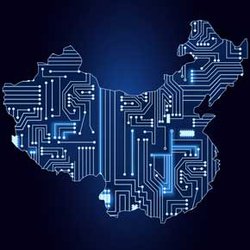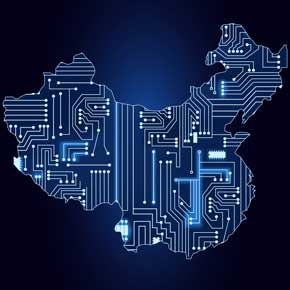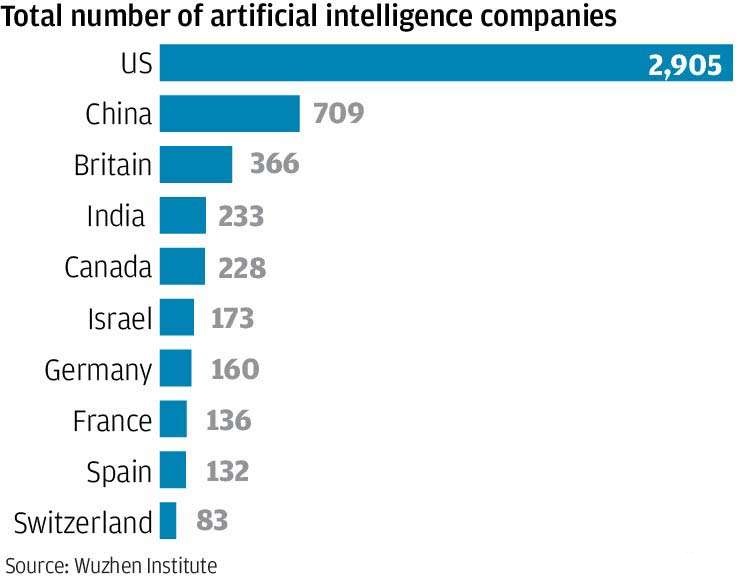
July 31, 2017
By: Michael Feldman
The Chinese government has released a three-phase plan to become the world leader in artificial intelligence. According to a document published by the country’s State Council, the development and deployment of AI is seen as a strategic opportunity to the country, and will be worth 10 trillion yuan (1.49 trillion USD) to the nation’s economy by 2030.
 The Chinese government sees AI technology as a new engine of economic development that will be critical to national security, industrial production, and social services. As a result, the country appears to be setting the same general course for AI it set for supercomputing years ago: to accelerate development of the core technology, attract top talent in the field, and leverage expertise in existing domestic companies.
The Chinese government sees AI technology as a new engine of economic development that will be critical to national security, industrial production, and social services. As a result, the country appears to be setting the same general course for AI it set for supercomputing years ago: to accelerate development of the core technology, attract top talent in the field, and leverage expertise in existing domestic companies.
In the first phase of the plan, which concludes in 2020, the goal is establish AI technology standards, service channels, and a commercial ecosystem. In this initial phase, the first round of AI technologies will begin deployment in key areas like autonomous systems, data analytics, and the media. To accomplish this, the government plans to “cultivate a number of the world's leading artificial intelligence backbone enterprises.” By the conclusion of the first phase, the government estimates the AI core industry to be worth 150 billion yuan (22.3 billion USD), with a value of 1 trillion yuan (150 million USD) to the overall economy.
In the second phase, which ends in 2025, the goal is to achieve “a major breakthrough” and establish a new generation of AI algorithms and systems. The idea here is to develop algorithms that can learn independently, rather than be directed by human input. How such a breakthrough will be accomplished on this particular schedule remains to be seen, but China appears to be counting on it to deploy AI more broadly in areas like manufacturing, healthcare, city services, agriculture, and national defense. By the end of this phase, the government projects that AI revenue will reach 400 billion yuan (59.5 billion USD), with a value of more than 5 trillion yuan (740 million USD) in related industries.
By the conclusion of the third phase in 2030, the goal is to establish China as the world leader in AI. During this part of the effort, the government plans to oversee a series of breakthroughs that produces something akin to human-level intelligence, sometimes known as strong AI. As a consequence, the technology will spread to all areas of the private and public sectors. At this point, the AI core market is projected to reach more 1 trillion yuan (150 million USD), with a total value of 10 trillion yuan (1.5 trillion USD) to the economy.
Although the plan touts the virtues of China’s socialist system to accomplish these goals, much of the effort is based on adhering to open markets and engaging in international collaborations. That is pretty much standard operating procedure for the Chinese government, at least in the way it has embarked on other high-tech efforts and industry initiatives.
China does have some natural advantages in AI development, namely, a large populace generating loads of data suitable for developing AI models, and a rapidly increasing pool of scientists and engineers. With regard to the former, China has something like 730 million internet users, who are constantly feeding their personal information to domestic web service providers from their mobile phones and computers. This is just the kind of data needed to build neural networks that can be used by companies for all sorts of lucrative sales and marketing opportunities.
As far as expertise goes, China has been surging in AI research in recent years. A 2016 White House report noted that China had eclipsed the US in the number of published studies in deep learning, while the number of patent submissions in this area has grown by almost 200 percent in the past few years. In addition, the Economist reports that according to some estimates, “China has more than two-fifth of the world’s AI scientists.” And while China is still a distant second to the US in the number of AI-based business, it is adding these companies at a rapid pace.

A recent report by PwC (PricewaterhouseCoopers) forecast that AI will boost China’s GDP 26 percent by 2030, further predicting that the country will “begin to pull ahead of the US’s AI productivity gains in ten years, after it catches up on a slower build up to the technology and expertise needed.” Given that the PwC report came out nearly a month before the Chinese plan was publicized, it’s an interesting coincidence that the two align rather closely.
Although not mentioned by name, TenCent, Baidu, and Alibaba will almost certainly be involved in any Chinese effort to advance artificial intelligence. These business already boast some of the most advanced technology in areas such as voice recognition, language translation, image recognition, and autonomous driving, and are continuing to invest heavily in AI. Plus, they all have their hooks into Silicon Valley in one way or another. Alibaba and Tencent, for example, have built datacenters in the region, while Baidu operates an AI research hub there.
However, questions remain about China’s ability to take advantage of international cooperation in the artificial intelligence realm. China has a long history of internet censorship, and as a consequence, the government’s relationship with some global AI leaders, like Google and Facebook, has been contentious, to say the least. Despite some progress, access to much of the internet, and thus the underlying technology, remains limited in the country. In the more free-wheeling collaborative model of Silicon Valley, the Chinese way of doing business is out of place.
This doesn’t matter nearly as much in an area like supercomputing, where it has excelled in recent years, since this tends to be a siloed enterprise. But AI is going to ride atop the global internet in most cases, and will be dependent upon its openness, scale, and the international community that drives it. If China truly wants to become a world leader in artificial intelligence, it may have to shed some of its inward-facing proclivities.
Image: Asia Business Council
